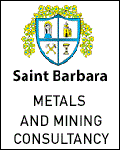Rebar cost model.

Cost Model - Steel Bar Mill - 2023.
Conversion costs for a typical reinforcing bar mill
Rebar Cost Modelling Notes and Assumptions
The Steel Costing ModelThe economic model shown above is prepared only to shown how rebar costs can be estimated through a simple cost benchmarking approach. The predicted total cost shown is not meant to represent an actual cost for any real steel company. It is a notional figure only - albeit one that is built on fairly representative current input cost (e.g. electricity prices) and resource usage information.
Input CostsKey input costs are based on average 2023 world average costs, with ferrous scrap at ~$350/tonne, billet at ~$525/t and rebar market prices of close to $640/tonne [ex-works]. This allows for a small profit of ~$35/tonne to be made by this notional plant, in this specific example. Other factor costs e.g. electricity are from other pages shown on the Steelonthenet.com website, with factor usage (energy use, yield etc) estimated by our technical experts and economists. SG&A denotes sales, general and administration cost. MHPT denotes man hours per tonne (a measure of labour force productivity).
The Steel ProductThe steel product for which the cost is shown above is a metric tonne of deformed reinforcing bar of approx 12mm diameter. The cost is for a notional small scale producer who has to purchase billet on the open market, and rolls this into rebar in a small size rolling mill of ~250kt / year capacity. Average labour productivity is assumed at a blue collar wage cost of $50k/year. To prepare cost benchmarks for specific locations please contact us (see below). Steel costs for the electric furnace steelmaking process route (EAF steelmaking) may be found on our EAF steelmaking costs page.
The Business EnvironmentSite visitors are advised that all estimates shown should be adjusted to reflect the particular business environment in which the steel plant operates. Thus, electricity charges may be substantially cheaper than usual because the rolling mill is run primarily at night (to benefit from cheaper night time tarrifs). Depreciation costs above are based on a rebar mill capex cost of $150/tonne, but may be higher or lower depending on the mill supplier. Labour productivity may also be substantially poorer than shown (especially in State-owned plants) etc.
Accounting MethodsActual costing estimates may differ because of local accounting practices or policies. The figures above for example assume straight line depreciation over a 20 year asset lifetime. The estimates also assume that 25% of labour cost are fixed - whilst in practice, all costs will be variable over the longer term. The model above endeavours to present the economic data on the basis of standard management accounting practices - users of the model should however be clear that the model is likely to require adaptation for different accounting circumstances.
Cost Model UpdatesTo estimate the impact of a change in any main input (e.g. location, billet cost, energy cost, or labour cost) on the total, fixed or variable production costs of any steel product (semi-finished; or flat, long, or pipe and tube finished steel) made through either main production process route (integrated steel manufacturing or electric arc steelmaking), please contact our our steel cost economists.
To contact us about this steel bar cost page please email info@steelonthenet.com.



